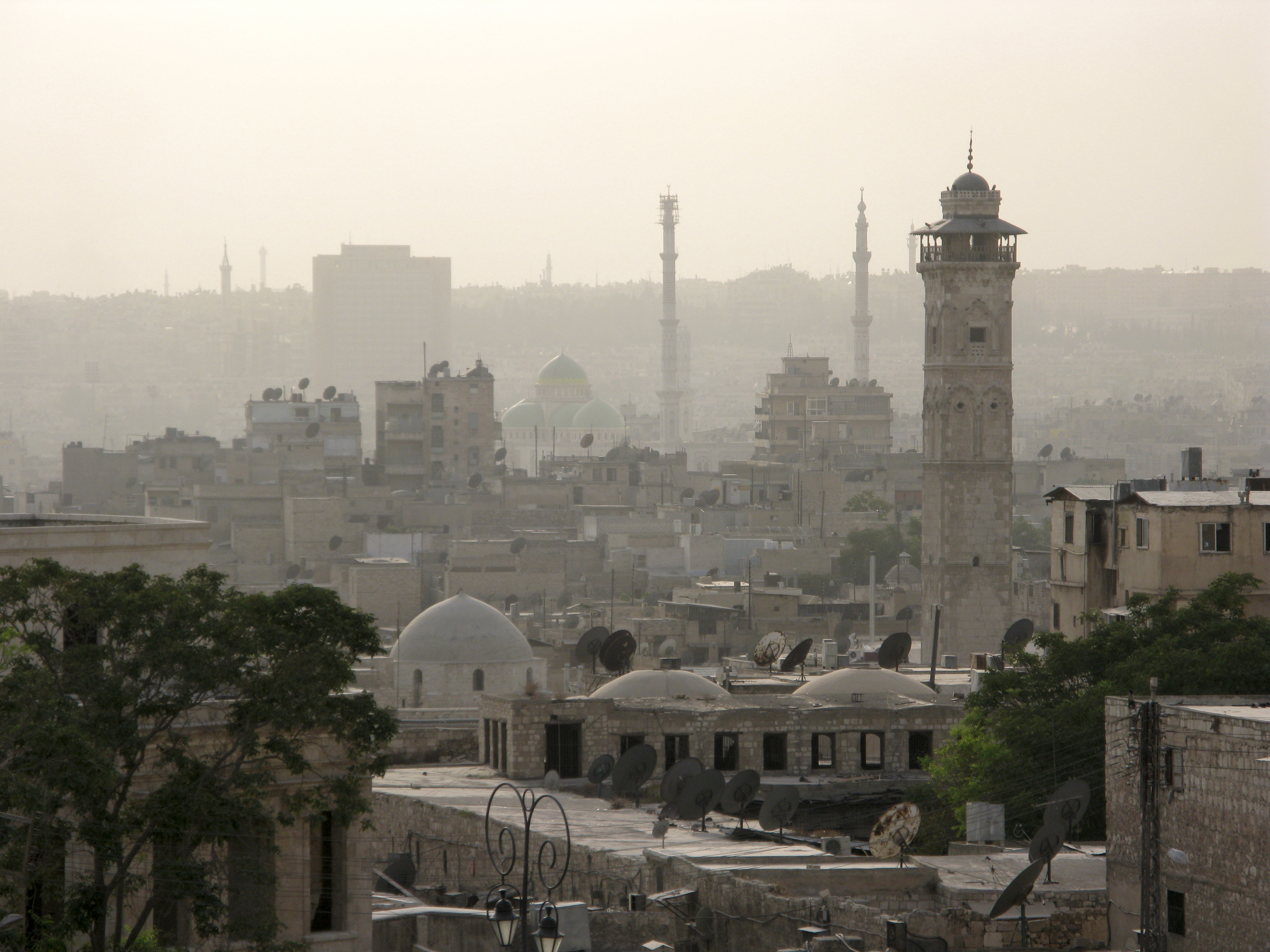|
Theodoulos Parsakoutenos
Theodoulos Parsakoutenos ( el, Θεόδουλος Παρσακουτηνός) was a Byzantine general who married into the Phokas clan. He was taken prisoner by the Hamdanid emir Sayf al-Dawla in 954 and remained in captivity until 966. Life The family's surname (erroneously spelled Παρσακουντηνός, Parsakountenos, in some manuscripts) derives from the locality of "Parsakoute" (Παρσακούτη). Theodoulos is the first known member of the family, and married a lady from the mighty clan of the Phokades, apparently a daughter of the general Bardas Phokas the Elder, father of the general and future emperor Nikephoros II Phokas (reigned 963–969). Theodoulos and his unnamed wife had three sons, Theodore, Bardas, and Nikephoros. His career is little known, except for some references in Arabic sources, which call him "the One-Eyed" (''al-A‘war'') and record that he was a ''patrikios'' and commander (''strategos'') of the themes of Tzamandos and Lykandos in 954, wh ... [...More Info...] [...Related Items...] OR: [Wikipedia] [Google] [Baidu] |
Byzantine
The Byzantine Empire, also referred to as the Eastern Roman Empire or Byzantium, was the continuation of the Roman Empire primarily in its eastern provinces during Late Antiquity and the Middle Ages, when its capital city was Constantinople. It survived the fragmentation and fall of the Western Roman Empire in the 5th century AD and continued to exist for an additional thousand years until the fall of Constantinople to the Ottoman Empire in 1453. During most of its existence, the empire remained the most powerful economic, cultural, and military force in Europe. The terms "Byzantine Empire" and "Eastern Roman Empire" were coined after the end of the realm; its citizens continued to refer to their empire as the Roman Empire, and to themselves as Romans—a term which Greeks continued to use for themselves into Ottoman times. Although the Roman state continued and its traditions were maintained, modern historians prefer to differentiate the Byzantine Empire from Ancient R ... [...More Info...] [...Related Items...] OR: [Wikipedia] [Google] [Baidu] |
Lykandos
Lykandos or Lycandus ( el, Λυκανδός), known as Djahan in Armenian, was the name of a Byzantine fortress and military-civilian province (or " theme"), known as the Theme of Lykandos (θέμα Λυκανδοῦ), in the 10th–11th centuries. History Origin and early history The fortress of Lykandos was located in the area of modern Elbistan in southeastern Turkey, on the Antitaurus Mountains.. It emerged as a major fortified military centre on the eastern Byzantine frontier under Emperor Leo VI the Wise (), through the actions of the Armenian leader Mleh ( Melias in Greek sources), who settled there in 903, establishing a quasi-autonomous lordship. The area was of critical strategic importance, lying directly on the frontier zone between the Byzantines and the Muslim border emirates of Syria and Upper Mesopotamia, and commanding one of the principal routes through the mountains into Byzantine Anatolia. In 905, however, Melias was expelled from the Byzantine Empire (along w ... [...More Info...] [...Related Items...] OR: [Wikipedia] [Google] [Baidu] |
Byzantine Prisoners Of War
The Byzantine Empire, also referred to as the Eastern Roman Empire or Byzantium, was the continuation of the Roman Empire primarily in its eastern provinces during Late Antiquity and the Middle Ages, when its capital city was Constantinople. It survived the fragmentation and fall of the Western Roman Empire in the 5th century AD and continued to exist for an additional thousand years until the fall of Constantinople to the Ottoman Empire in 1453. During most of its existence, the empire remained the most powerful economic, cultural, and military force in Europe. The terms "Byzantine Empire" and "Eastern Roman Empire" were coined after the end of the realm; its citizens continued to refer to their empire as the Roman Empire, and to themselves as Romans—a term which Greeks continued to use for themselves into Ottoman times. Although the Roman state continued and its traditions were maintained, modern historians prefer to differentiate the Byzantine Empire from Ancient Rome a ... [...More Info...] [...Related Items...] OR: [Wikipedia] [Google] [Baidu] |
Byzantine Generals
A Byzantine fault (also Byzantine generals problem, interactive consistency, source congruency, error avalanche, Byzantine agreement problem, and Byzantine failure) is a condition of a computer system, particularly distributed computing systems, where components may fail and there is imperfect information on whether a component has failed. The term takes its name from an allegory, the "Byzantine generals problem", developed to describe a situation in which, in order to avoid catastrophic failure of the system, the system's actors must agree on a concerted strategy, but some of these actors are unreliable. In a Byzantine fault, a component such as a server can inconsistently appear both failed and functioning to failure-detection systems, presenting different symptoms to different observers. It is difficult for the other components to declare it failed and shut it out of the network, because they need to first reach a consensus regarding which component has failed in the first p ... [...More Info...] [...Related Items...] OR: [Wikipedia] [Google] [Baidu] |
10th-century Byzantine Military Personnel
1 (one, unit, unity) is a number representing a single or the only entity. 1 is also a numerical digit and represents a single unit of counting or measurement. For example, a line segment of ''unit length'' is a line segment of length 1. In conventions of sign where zero is considered neither positive nor negative, 1 is the first and smallest positive integer. It is also sometimes considered the first of the infinite sequence of natural numbers, followed by 2, although by other definitions 1 is the second natural number, following 0. The fundamental mathematical property of 1 is to be a multiplicative identity, meaning that any number multiplied by 1 equals the same number. Most if not all properties of 1 can be deduced from this. In advanced mathematics, a multiplicative identity is often denoted 1, even if it is not a number. 1 is by convention not considered a prime number; this was not universally accepted until the mid-20th century. Additionally, 1 is the ... [...More Info...] [...Related Items...] OR: [Wikipedia] [Google] [Baidu] |
10th-century Deaths
1 (one, unit, unity) is a number representing a single or the only entity. 1 is also a numerical digit and represents a single unit of counting or measurement. For example, a line segment of ''unit length'' is a line segment of length 1. In conventions of sign where zero is considered neither positive nor negative, 1 is the first and smallest positive integer. It is also sometimes considered the first of the infinite sequence of natural numbers, followed by 2, although by other definitions 1 is the second natural number, following 0. The fundamental mathematical property of 1 is to be a multiplicative identity, meaning that any number multiplied by 1 equals the same number. Most if not all properties of 1 can be deduced from this. In advanced mathematics, a multiplicative identity is often denoted 1, even if it is not a number. 1 is by convention not considered a prime number; this was not universally accepted until the mid-20th century. Additionally, 1 i ... [...More Info...] [...Related Items...] OR: [Wikipedia] [Google] [Baidu] |
Arab–Byzantine Prisoner Exchanges
During the course of the Arab–Byzantine wars, exchanges of prisoners of war became a regular feature of the relations between the Byzantine Empire and the Abbasid Caliphate. The exchanges began in the late 8th century and continued until the late 10th century. Most of them took place at the Lamos River in Cilicia, on the border between the two powers. Background Centuries of war between the Byzantine Empire and the Arab Caliphate had led to a degree of mutual understanding and respect, evidenced by a regular pattern of diplomatic and cultural exchange between the two powers. This is exemplified in the protocols for the imperial receptions at the Byzantine court, where the "Eastern Muslims" are accorded the first place immediately after any ecclesiastical officials, including Bulgarians and Frankish co-religionists. There was also humane treatment of prisoners of war by both sides; on the Byzantine side, although Arab prisoners were usually paraded in triumphal processions, th ... [...More Info...] [...Related Items...] OR: [Wikipedia] [Google] [Baidu] |
Abu Firas Al-Hamdani
Al-Harith ibn Abi’l-ʿAlaʾ Saʿid ibn Hamdan al-Taghlibi (932–968), better known by his pen name Abu Firas al-Hamdani ( ar, أبو فارس الحمداني), was an Arab prince and poet. He was a cousin of Sayf al-Dawla and a member of the Hamdanid dynasty, who were rulers in northern Syria and Upper Mesopotamia during the 10th century. He served Sayf al-Dawla as governor of Manbij as well as court poet, and was active in his cousin's wars against the Byzantine Empire. He was captured by the Byzantines in 959/962 and spent several years at their capital, Constantinople, where he composed his most famous work, the collection of poems titled (). He was ransomed in 966, and was killed in 968, when he raised a revolt against his nephew Sa'd al-Dawla, Sayf al-Dawla's successor. He is considered among the greatest figures of classical Arabic poetry. Life Abu Firas was born in 932 or in 933, probably in Iraq and specifically in Baghdad, as his father Abi'l-Ala Sa'id—a son ... [...More Info...] [...Related Items...] OR: [Wikipedia] [Google] [Baidu] |
Aleppo
)), is an adjective which means "white-colored mixed with black". , motto = , image_map = , mapsize = , map_caption = , image_map1 = , mapsize1 = , map_caption1 = , pushpin_map = Syria#Mediterranean east#Asia#Syria Aleppo , pushpin_label_position = left , pushpin_relief = yes , pushpin_mapsize = , pushpin_map_caption = Location of Aleppo in Syria , coordinates = , subdivision_type = Country , subdivision_name = , subdivision_type1 = Governorate , subdivision_type2 = District , subdivision_type3 = Subdistrict , subdivision_name1 = Aleppo Governorate , subdivision_name2 = Mount Simeon (Jabal Semaan) , subdivision_name3 = Mount Simeon ... [...More Info...] [...Related Items...] OR: [Wikipedia] [Google] [Baidu] |
Hadath
Al-Ḥadath al-Ḥamrā' (Arabic for "Hadath the Red") or Adata ( el, ) was a town and fortress near the Taurus Mountains (modern southeastern Turkey), which played an important role in the Byzantine–Arab Wars. Location The town was located at ca. 1000 m altitude on the southern feet of the Taurus- Antitaurus range, near the upper course of the Aksu River in the Gölbaşı district. Its exact location has been lost, and it has been variously identified with locations north or south of Inekli lake.Ory (1971), pp. 19–20Houtsma (1987), p. 187 History Hadath became important in the early Middle Ages due to its strategic location: it was located in the fortified frontier zone, the ''Thughūr'', that separated the Umayyad and Abbasid empires from the Byzantine Empire. The town lay to the southwest of the important Pass of Hadath/Adata (''darb al-Ḥadath'') which led over the Taurus into Byzantine Anatolia, but was also situated between the two major frontier strongholds o ... [...More Info...] [...Related Items...] OR: [Wikipedia] [Google] [Baidu] |



